In February 2020, news of a viral outbreak of coronavirus in Wuhan, China began to make national news. The virus was a serious concern, but it felt far away. Then, on March 3, the second known case of coronavirus in New York State was announced.
What was hopefully going to be a short pause in our daily lives has become over a yearlong challenge.
As 2020 marched on, we began to define “the new normal.” Businesses operated at limited capacities. Employees juggled work and home life. We ate outdoors on sidewalks and in “street” cafes. Schoolchildren learned from their kitchen tables. And of course, wearing masks and social distancing became habit.
Now, as vaccines roll out on a national scale, we again face the question of what is “the new normal.” Business leaders have had to innovate and pivot in a time of great uncertainty, and it has been Iona Gaels who have led the way for many companies.
In 2020, the buzz and excitement of March Madness were just around the corner when sports across the nation were shut down. The global sports industry was estimated to be valued at $471 billion in 2018, an increase of 45% since 2011. The industry was on a meteoric rise, but the coronavirus ground everything to a halt.
For Timothy McCarthy ’83, senior vice president/GM, Audio Play-by-Play & New York/LA Radio at ESPN, the effects of the cancellations were strong and immediate. “Suddenly, no one could come into the studios,” recalled McCarthy. “Where were we going to do our shows from?” He and his team acted quickly to get equipment into the homes of his on-air talent and staffers, in separate locations, committed to creating quality shows from their homes. Then the next challenge was how to fill the airtime.
“There were no sports, no commercials, nothing to talk about. We needed to adapt quickly,” McCarthy said. “We still needed to be that “happy place” for our listeners, so we focused on entertainment, sports trivia, held interactive Zoom events with our talent, featured player interviews – anything that was upbeat and positive.”

With sports restarting and fans returning, things are bouncing back. “I think our fans appreciated how we adapted quickly and continued to provide meaningful content during those early months,” stated McCarthy. The transition to in-home may have worked, but according to McCarthy, “we are a people business; you can’t replace being in front of someone for an interview or the social interaction that takes place in the office. We really are a family and miss the interaction.”
The travel industry is all about people, and Evita Robinson ’06, founder of NOMADNESS Travel Tribe, a travel lifestyle brand with a family of over 25,000 black and brown travelers from 36 countries, was leading a tour group of 45 at the Taj Mahal in India when word came that American travelers were being instructed to return to the United States. “We took a collective deep breath and continued on with our tour,” Evita said, “but on the ride back to the hotel, my team and I immediately began planning for the future.”
As the industry vanished seemingly overnight, Robinson knew she needed to continue to provide value and a sense of community to the members of NOMADNESS. To do this, she channeled her background in television and video production and helped convert the annual in-person AUDACITY Fest, which brings leaders across the travel industry together for workshops, seminars, music and conversation, to a virtual platform. “Our digital events broke the demographic glass ceiling,” Robinson said. “We attracted people of all backgrounds from all over the world, as well as people who can’t afford to travel.”
As for the future, Robinson knows there is pent-up demand for travel but also confirmed her new normal. “Going forward, our events will be taking a hybrid form so all those people who can’t attend in-person can still be a part of the tribe.”
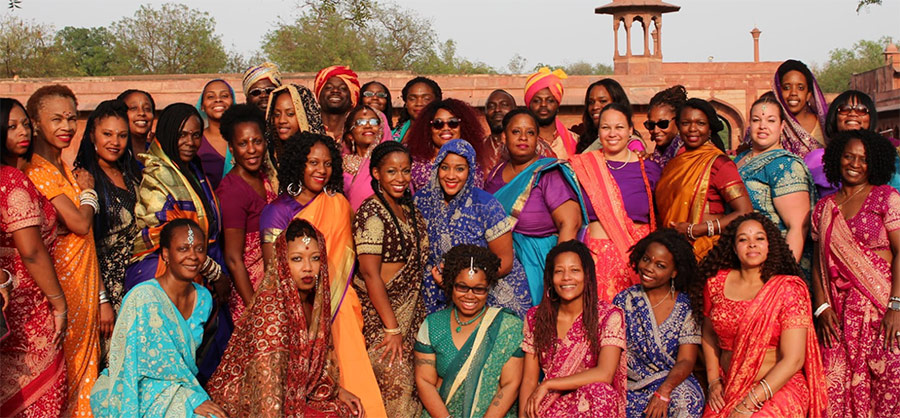
As business looked bleak, it was adaptability that became the name of the game for the real estate industry. For Daniel Houlihan ’75, president of Houlihan & O’Malley Real Estate Services, the challenges were varied and numerous. “Not every segment of the industry was impacted the same way,” stated Houlihan, who directs the commercial real estate side of the business.
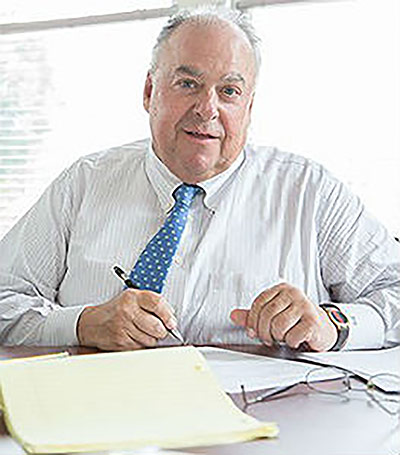
“We were still managing properties, but the degree of uncertainty was significant,” he said of those early months in the pandemic. “Different tenants were impacted more severely than others.” For retail, he stated there was already a change happening, principally with people ordering online, and the pandemic has accelerated that change. “There was an existing contraction in mall retail spaces, and I don’t see how this won’t continue.” The online trend, however, has sparked a significant value increase in warehouse and light industrial space. Consumers spent $861.12 billion online with U.S. merchants in 2020, up an incredible 44 percent year over year, according to Digital Commerce 360 estimates.
On the residential brokerage side, the initial impact was severe. “We were trying to show and sell homes by FaceTiming with buyers,” he joked. But then, the wave of buyers coming out of New York City turned the tide, and the residential market boomed and continues to be red hot.
The big question for real estate is what is the new normal for office space. With a mix of workers remaining remote, others indicating they plan to only go into the office a few days each month and yet others saying they can’t wait to go back, only time will tell. Houlihan said, “I don’t think we are going to know about the full extent of the ‘shakeout’ in the commercial real estate market for at least a year and probably longer.”
Domenick Ciaccia ’80, the president of Universal (Tea) Trading, Inc., channeled his leadership skills as he witnessed COVID have a seesaw effect on his business — tea sales dropped in restaurants and cafes but rose in the consumer market. “At the first sign of lockdowns, our partners and we began to forecast a disruption to the normal, smooth running of imports … we acted quickly and accelerated the transit of as much product as possible. Being supply chain custodians, our very existence is about adapting to problems. So, in some ways, this was just another challenge to adapt to,” stated Ciaccia.
The one upside was that more people working from home wanted to still enjoy that cup of tea. According to Ciacca, consumers grew (generally) less price-conscious at home and “traded up” for a higher-quality tea and consumed more throughout the day. Interesting to note, tea is consumed more than any other drink worldwide, other than water, and is known to have proven health benefits. Many traditional teas such as black, green and oolong have naturally occurring compounds that act as antioxidants in our bodies, while other teas such as chamomile can boost the immune system. “Yes, people are drinking tea for health reasons but also because it gives people a sense of calm and comfort – very important qualities in these times!” commented Ciaccia, whose favorite is a good cup of English Breakfast.
Through this all, Ciaccia is hopeful for a new normal where “consumers move away from buying the cheapest tea and realize if they paid a little more, they would have a much nicer experience – and enable us to invest in people back on the farms, in the environment and in new products.”
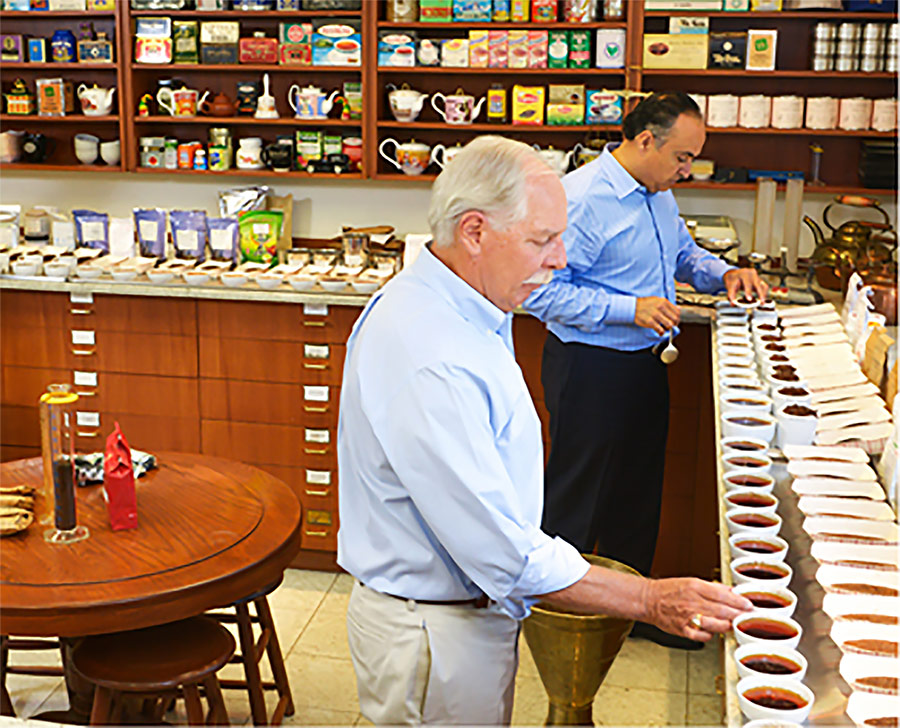
The needs of the consumer were always a focus for Salvatore M. Bonavita ’89, the president of Belmonte Markets & Management, which maintains two local grocery stores in the Bronx. But with the new normal, he had to develop novel strategies to those needs. As a family business, Bonavita knew the important role his stores played for the members of the community and his employees. “Our immediate need was to create an environment where our customers and staff felt safe,” said Bonavita, “and then effectively communicate the actions we took so they understood we were taking things seriously.” In fact, he leaned very heavily on his communication skills during the pandemic, saying “I needed to effectively communicate to understand what my customers needed, what was motivating or holding back my employees – communicating on multiple levels with people to get their buy-in and then manage expectations. This was the challenge but also the key to survival.”
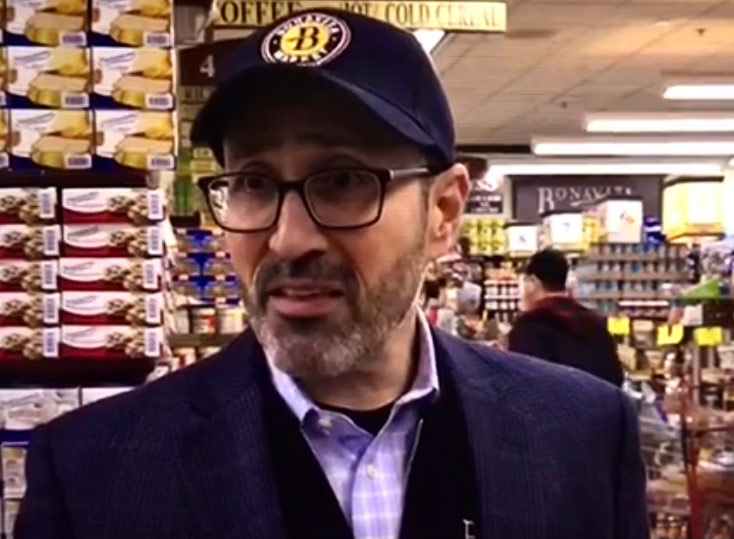
And survival for a small community grocer can be tough with the rise in online shopping. “With COVID, people have gotten more and more comfortable with online grocery shopping. It’s easy to offer the remote service but very difficult to execute at a level that customers have become accustomed to. Think of the Amazon experience – push a button and get it at your doorstep the same day. That’s hard to beat.” As online may be the new normal for many, Bonavita still feels his corner market will remain a viable and safe place for community members to gather, shop and possibly indulge in a little neighborhood gossip.
As we shopped in our pajamas and found ourselves spending way too much time at home, our televisions and computer screens became an easy way to pass the hours.
In the quest for in-home entertainment, online streaming services became the go-to for content-starved consumers. For Tony Goncalves ’94, executive vice president and chief revenue officer of WarnerMedia, the launch of HBO Max was both timely and necessary.
When COVID-19 shuttered movie theaters and threw the 2020 movie release schedule into disarray, Goncalves and the executives at WarnerMedia quickly asked, “What do we do with the content slate, regardless of whether it’s a documentary or an epic film sitting on the shelf?” Goncalves said. “What’s the best use of that content, but more importantly, how do we get it to the consumers as quickly as possible?”

“We made the bold decision to stream movies, through HBO Max, the same day they hit theaters – creating a win-win situation for the company and the consumers, who had proven they wanted and would pay for content during the pandemic.” Forbes marked a 35 percent increase in online video subscriptions in 2020, accounting for $24.7 billion globally.
“Launching and delivering HBO Max during the pandemic was pretty remarkable,” Goncalves commented. “We went fully remote overnight and adapted quickly, showed empathy and rallied our team around the project which gave them a clear purpose which was so needed in such an uncertain time.” As a leader, Goncalves knows the importance of interaction in the work place, and he devised a way of “scheduling culture” to help his team stay in contact. “Gone were the hallway conversations, casual coffees and lunches with colleagues. Yes, we can be technologically advanced, and we can be hyper-efficient in the remote setting. But it’s just as important to make time to bring teams together, to build a culture and a community, and that was difficult in the virtual workspace,” he remarked.
As for the new normal, Goncalves commented, “the pandemic accelerated the evolution of films, streaming and theater…the future will be different, but there will always be a value to theaters and that experience. Moviemakers will continue to create for an epic theatrical experience in the theater, and we feel this is important.”
From boardrooms to living rooms, kitchens or spare bedrooms, working from home was a massive adjustment for the workforce at all levels, and leaders bore the brunt of the change. As office life very quickly became a nonexistent, there was a void that needed to be filled for employees who missed that sense of community.
“We have a saying that things now have to happen by design rather than by default,” quipped Eileen Mahon Gruse ’81, vice president of talent and development at People’s United Bank. “There’s a lot of interaction that happens by default when you’re in an office because you’re going to see and connect with people. Now you have to be very intentional about how you do that.”
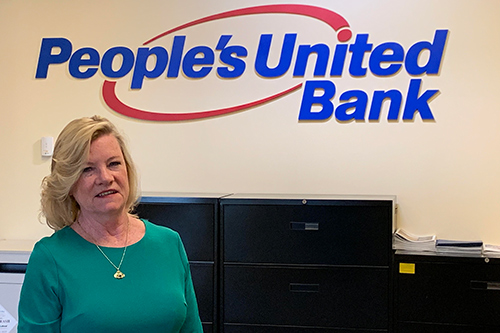
To address this, she and her team quickly developed and offered online coaching workshops for their managers on how to connect with and lead their teams in this ‘new’ virtual world. “We emphasized asking questions that seek to understand what the employees were going through, how they were managing work-life balance, childcare, etc.,” she commented. “We put a few classes on the calendar to see if there was interest in this type of training, and what we found was that managers were desperate for this needed support. We are still offering the Continuous Coaching workshops today.”
Gruse also emphasized, with the loss of in-person communication, it was critical for leaders to not only have empathy but also establish a clear vision for their teams. “It’s easy to get distracted with things you can’t control, so creating a clear and consistent vision of what we can control and keeping people focused on it is the key to keeping employees engaged and productive,” she said. The banking industry was already changing prior to COVID and will continue to evolve, with more online options, but according to Gruse, one thing that won’t change is the need for leaders to create a strong vision.
The COVID-19 pandemic has undoubtedly changed countless aspects of daily life. Whether it’s how we shop, watch movies, listen to sports or drink tea to where we work or simply how we engage with one another, we all have had to adjust. We also have seen that it takes ingenuity not only to pivot and survive through a pandemic but also to thrive.
As we navigate our way through this “new normal,” one thing is clear. As Gaels, we will continue to lead the way.


Comments are closed, but trackbacks and pingbacks are open.